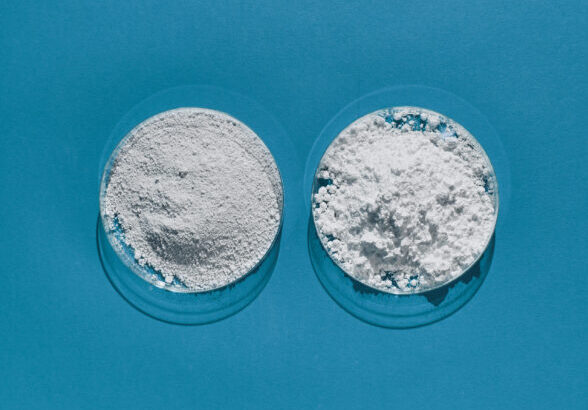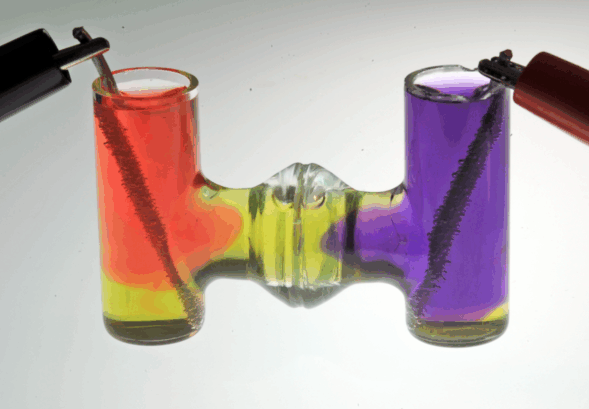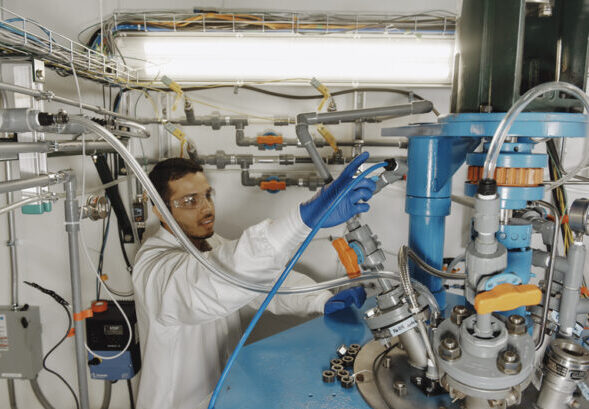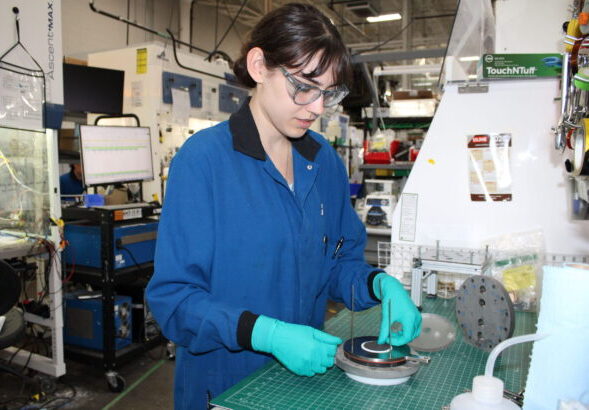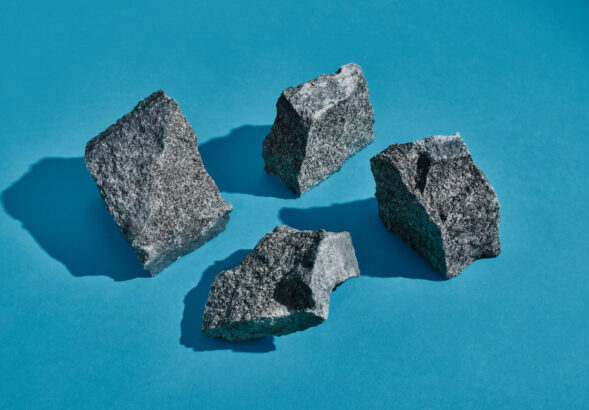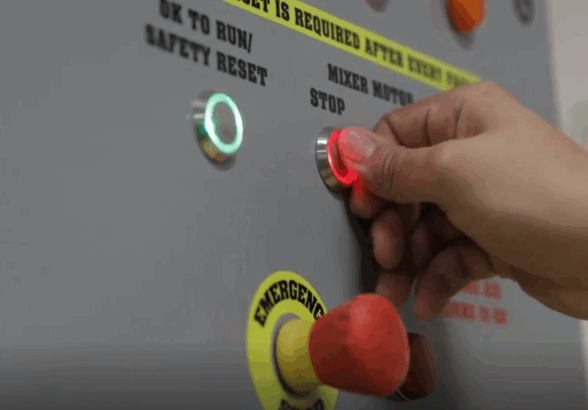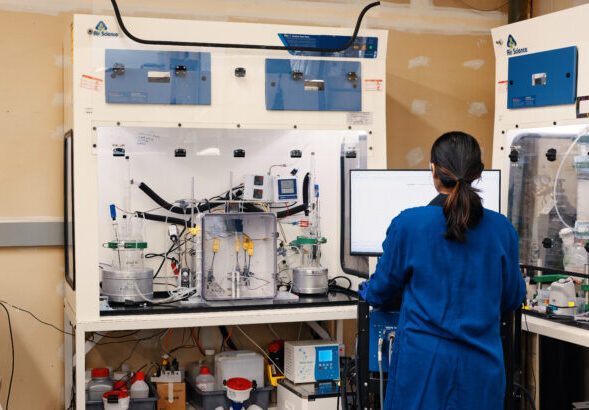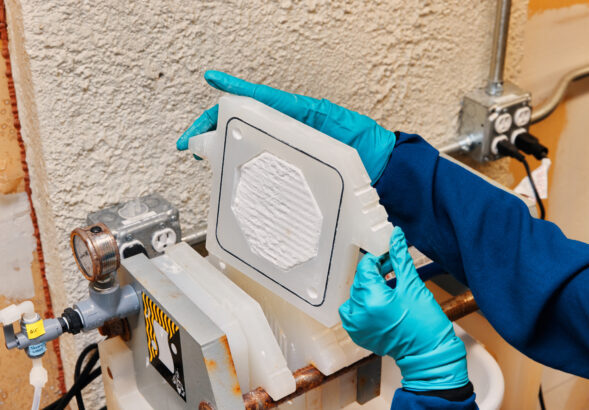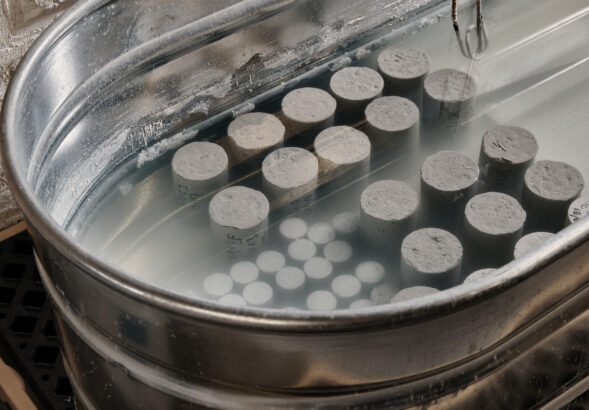Sublime’s breakthrough “refinery for rocks” technology takes low-value rocks and industrial byproducts and breaks them down into their constituent pure minerals: cementitious ingredients and critical minerals. Our process reduces harmful emissions and waste and is more energy efficient, while enabling a more durable, consistent, and beautiful cement.

Sublime’s cement manufacturing avoids the extreme heat and rigid feedstock requirements for making ordinary portland cement (OPC). Our process is cutting-edge, but the product is timeless — it forms the same hardened concrete we’ve relied on for millennia.
OPC is made by heating a specific ratio of limestone, silica, alumina, and iron. First, it is heated to 900°C to decompose the limestone—releasing ~50% of its weight as CO2— and then to 1450 °C, the temperature at which the characteristic phase (alite) of portland cement forms. This semi-molten mix is quenched with cool air and ground with gypsum to form a fine cement powder.
To make concrete, cement is mixed with sand, gravel, and water to initiate the cement hydration reactions. Alite reacts with water quickly to form calcium silicate hydrate, the strength-bearing, hardened phase of concrete.
Our process transforms electrical energy into chemical energy to break feedstocks down into their constituent minerals. We then reassemble these pure, reactive ingredients into the ideal cement composition. The non-cementitious minerals can be produced at high purity and sold into multiple commodity markets to support the production of steel and lightweight metals needed for manufacturing and national security
Low-value calcium silicate rocks or industrial wastes.
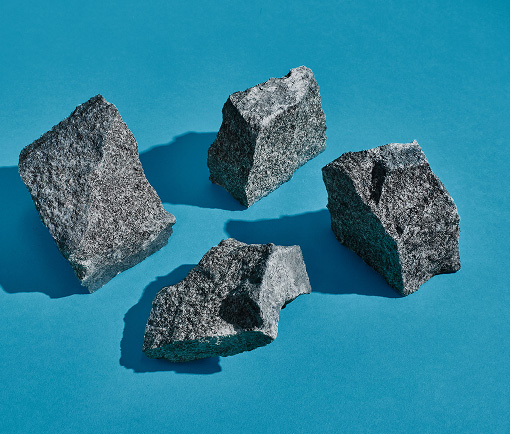
We use electricity, not heat, to drive the chemical reactions that create cementitious ingredients.


We can extract the non-cementitious minerals from the rock, yielding co-products like magnesium, iron, and aluminum, critical minerals that we mostly import today in the U.S.
Calcium (Sublime Lime®) and silicates are separated from this process as dry powders then blended together as the essential, reactive ingredients for Sublime Cement®.
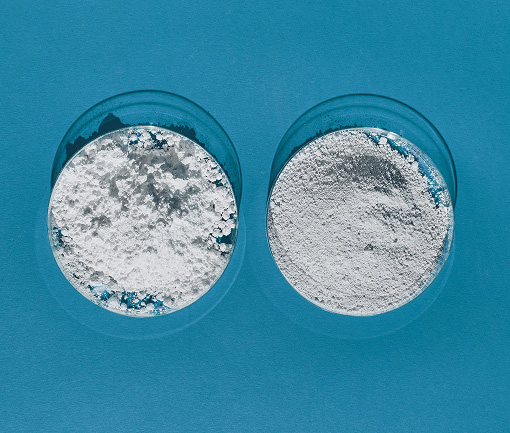
The final result is an ASTM-compliant Sublime Cement to displace OPC in concrete.
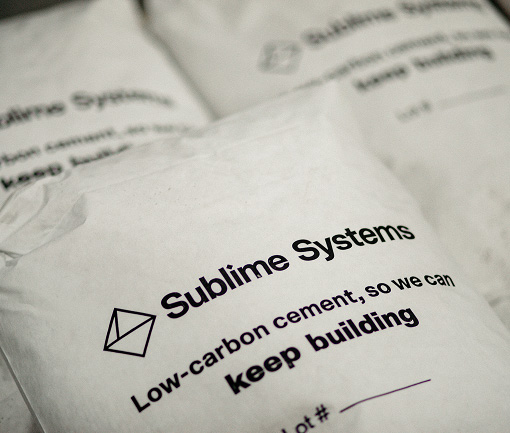
Our process transforms electrical energy into chemical energy to break feedstocks down into their constituent minerals. We then reassemble these pure, reactive ingredients into the ideal cement composition. The non-cementitious components can be produced at high purity and sold into multiple commodity markets to support the production of steel, ceramics, pigments, fire retardants, and more.
We are ushering in the future of clean construction and manufacturing with better materials, made in a better way. Our true-zero technology avoids pollution rather than cleaning it up, offering an efficient, low-waste, low-cost path to quality, clean cement.
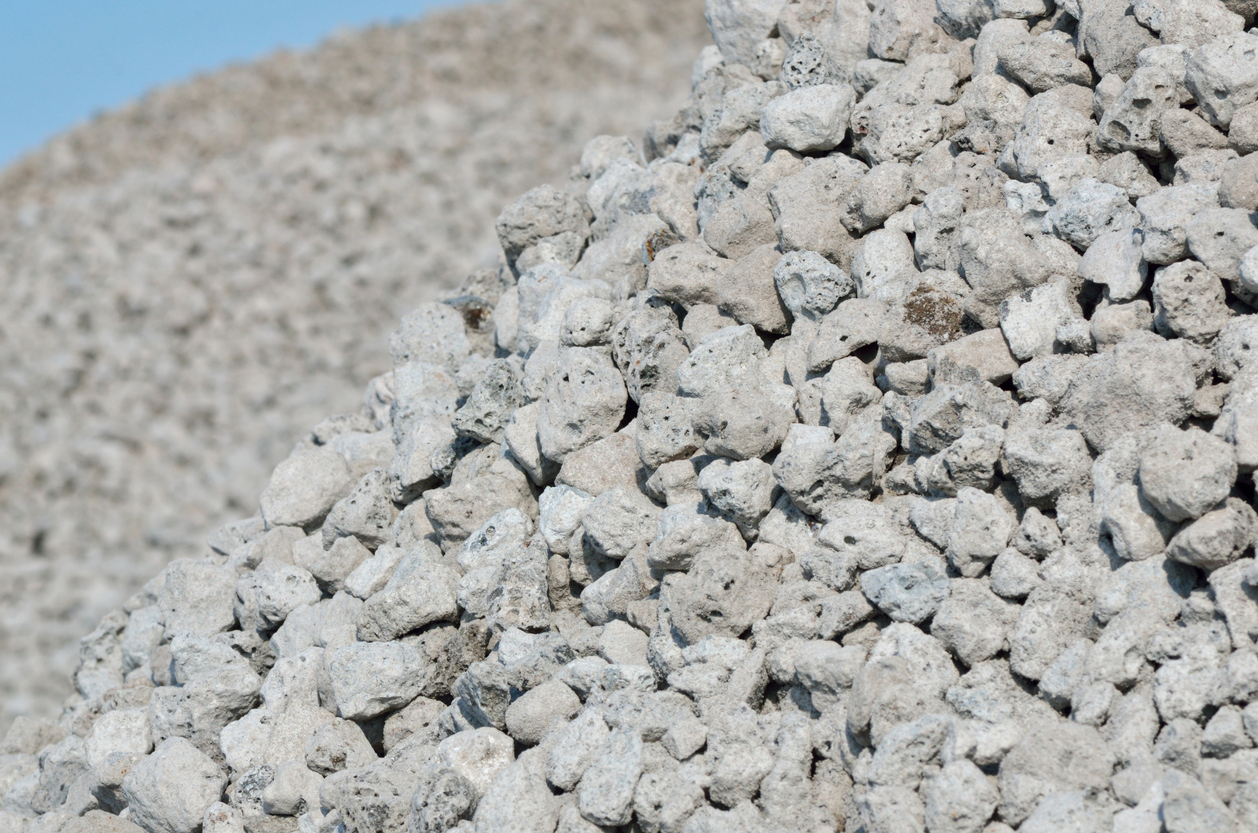
Traditional OPC production loses 50% of limestone to waste and pollution. Our process transforms nearly all of the feedstock to products, creating near-zero waste and a path for upcycling industrial byproducts into valuable construction materials and tapping into a domestic circular economy.

Our electrochemical technology can reduce the embodied energy of cement-making below the theoretical limit of today’s OPC process, where 40% of energy is lost. Our process can also easily ramp up and down, responding to energy loads and modulating the grid.

By avoiding CO2 and other pollution with our “true-zero” (not net-zero) approach, we skip costly carbon capture and utilization infrastructure. This, plus the increased energy efficiency of our process, offers the lowest cost path to clean cement.

Today’s OPC plants are at the mercy of the feedstock limestone, constraining production to certain geographies and hampering supply chains. Our process harnesses globally abundant feedstocks, enabling cement making in places never before possible—even Mars.
Our clean, ASTM-compliant cement can be reliably used in construction projects in the U.S. today, while delivering additional benefits to the construction industry such as increased durability, lighter color, and consistent quality. Join us in building the foundation of a cleaner, more adaptable, more beautiful future.






